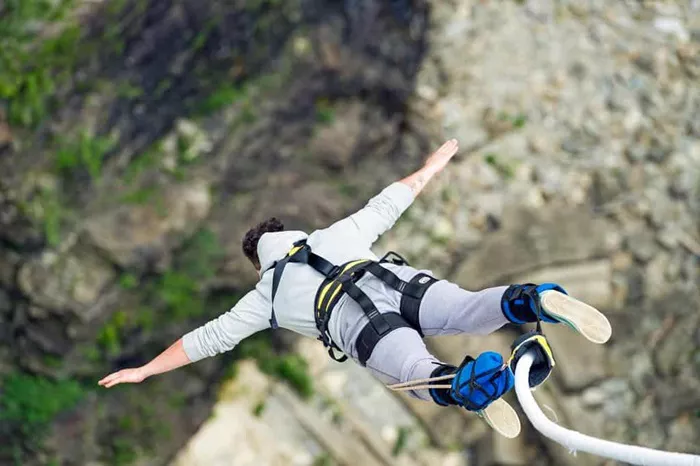Bungee jumping is often viewed as an exhilarating adventure, appealing to thrill-seekers around the world. However, beneath the excitement lies a range of risks and dangers that participants must understand before taking the plunge. This article delves into the various reasons why bungee jumping can be considered dangerous, examining equipment failures, health risks, operator competence, and environmental factors.
1. Equipment Failures
One of the most significant dangers in bungee jumping arises from potential equipment failures. The primary components involved in a bungee jump include the bungee cord, harnesses, carabiners, and the jump platform itself. Each of these elements must be meticulously maintained and inspected to ensure safety.
Bungee Cord Integrity: The bungee cord is designed to absorb the jumper’s fall and propel them back upwards. If this cord fails—due to wear and tear, fraying, or improper length—it can lead to catastrophic injuries or even death. Regular inspections are crucial to identify any signs of deterioration.
Harness Issues: Improperly secured harnesses are another common cause of accidents. If a jumper’s harness is not fastened correctly, they risk falling out during the jump. This emphasizes the importance of thorough checks by trained professionals before each jump.
Platform Safety: The jump platform must be securely anchored and constructed from reliable materials. Any instability can result in accidents during take-off or landing. Operators must ensure that all safety measures are in place to prevent mishaps.
2. Operator Competence
The competence of the bungee jumping operators is critical in ensuring a safe experience for participants. Operators must be well-trained and adhere strictly to safety protocols.
Training and Certification: Operators should undergo comprehensive training that includes emergency procedures, equipment handling, and jumper safety protocols. Inadequate training can lead to mistakes that jeopardize jumper safety.
Weight Calculations: Correctly calculating the length of the bungee cord based on the jumper’s weight is essential. Miscalculations can result in severe injuries if a jumper falls too far or hits the ground due to an overly long cord.
Health Assessments: Operators should conduct health assessments for participants to identify any pre-existing conditions that may increase risks during the jump. Individuals with heart conditions, high blood pressure, or other serious health issues should be discouraged from participating without medical clearance.
3. Health Risks
Bungee jumping poses various health risks that can affect participants both physically and psychologically.
Physical Injuries: Common injuries associated with bungee jumping include neck strains, back injuries, and even more severe conditions like spinal cord damage. The sudden deceleration experienced during a jump can put immense stress on the body.
Eye Injuries: The rapid changes in pressure during a jump can lead to eye injuries due to increased pressure within the eyes. This can result in temporary vision loss or more severe conditions such as retinal detachment.
Psychological Effects: The extreme nature of bungee jumping can also induce psychological effects such as anxiety or panic attacks in some individuals. It’s important for participants to assess their mental readiness before attempting such an extreme sport.
4. Environmental Factors
The environment where bungee jumping occurs plays a significant role in determining safety levels.
Weather Conditions: Unpredictable weather can drastically affect safety during jumps. High winds, rain, or fog can impair visibility and control, increasing the risk of accidents. Operators should postpone jumps under adverse weather conditions.
Jump Site Location: The geographical location of the jump site also matters. Sites near water bodies or rocky terrains pose additional hazards if a jumper falls outside of their designated area during descent.
5. Statistical Context
While many perceive bungee jumping as inherently dangerous, statistical data provides a more nuanced perspective.
Injury Rates: According to industry statistics, while injuries do occur, severe injuries are relatively rare when jumps are conducted under strict safety protocols. Many facilities report minimal incidents over thousands of jumps due to rigorous safety measures.
Fatality Rates: Although fatalities have occurred in bungee jumping history, they are infrequent compared to other extreme sports like skydiving or rock climbing. Most deaths result from human error—either by miscalculating cord lengths or failing to secure harnesses properly—rather than equipment failure itself.
Mitigating Risks
To enhance safety in bungee jumping operations, several best practices should be implemented:
Regular Equipment Inspections: Operators should establish routine checks for all equipment used in jumps—particularly focusing on cords and harnesses—to ensure they meet safety standards.
Comprehensive Staff Training: Continuous training programs for staff should include updates on safety protocols and emergency response techniques to handle potential incidents effectively.
Health Screening Procedures: Implementing health screening processes for participants will help identify individuals at higher risk due to pre-existing conditions before they engage in jumping activities.
Environmental Assessments: Operators must evaluate weather conditions before allowing jumps and have clear guidelines regarding acceptable environmental factors for safe jumping conditions.
Conclusion
Bungee jumping undoubtedly offers an adrenaline rush like no other; however, it is essential for participants to recognize and understand the inherent dangers involved. By being aware of equipment failures, operator competence, health risks, and environmental factors, thrill-seekers can make informed decisions about their participation in this extreme sport.
Ultimately, while bungee jumping carries risks—much like any extreme sport—adhering to strict safety protocols and understanding personal limitations can significantly mitigate these dangers. As with any adventure activity, knowledge is power; being well-informed about potential hazards allows individuals to enjoy their experience while prioritizing their safety above all else.
Related topics:
- How Much Money Can You Make as a Skydiving Instructor?
- Where Is the World’s Cheapest Skydiving and Is It Safe?
- Which Is a Recommended Water-Skiing Safety Practice?

